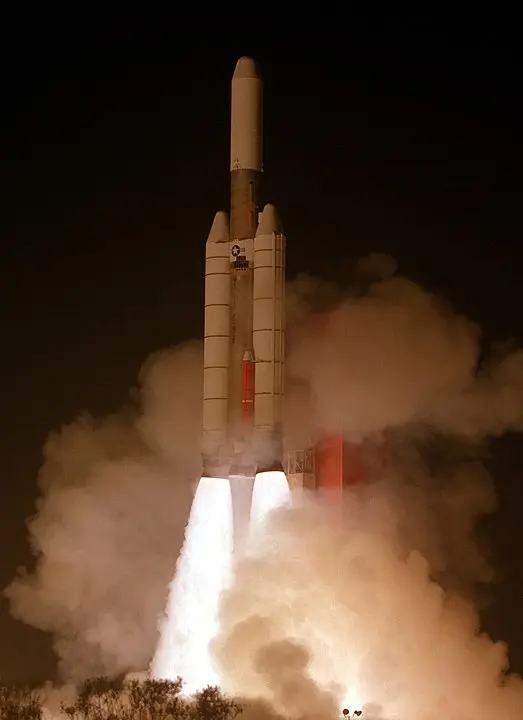KH-9 20 (Hexagon 20) & Pearl Ruby
Launch Failure
Liftoff Time (GMT)
18:45:00
Friday April 18, 1986
Mission Details
Launch Notes
Solid rocket motor exploded at T+8 seconds due to booster segment joint failure.
KH-9 20 (Hexagon 20)
The KH-9, also known as Hexagon or "Big Bird," was a large reconnaissance satellite designed to replace the earlier KH-4B Corona satellites. Unlike its predecessors, it utilized a new maneuverable bus called SCS (Satellite Control Section) and featured four return capsules for extended operational lifespan. Manufactured by McDonnell Douglas, the Mk.8 return capsules facilitated mid-air recovery of film capsules, similar to Corona satellites. The camera system, built by Perkin-Elmer, comprised two panoramic cameras for area surveillance, capturing images at altitudes ranging from 90 to 200 miles. These cameras utilized an f/3.0 folded Wright Camera optical layout with a 1.5 m focal length and achieved ground resolutions better than 0.61 m, scanning areas up to 120° wide.
Polar Orbit
1 Payload
13,300 kilograms
Pearl Ruby
Pearl Ruby was a piggy-back experiment flown on the last KH-9 Hexagon reconnaissance satellite. Likely Pearl Ruby was to test advanced Infra-red sensors on orbit as part of DARPA's Ruby series of infrared experiments.
Rocket


Agency
Martin MariettaRocket
Height: 50m
Payload to Orbit
LEO: 14,515 kg
GTO: 5,000 kg
Liftoff Thrust
11,279 Kilonewtons
Fairing
Diameter: 3.05m
Stages
3
Strap-ons
2
Launch Site
Stats
Titan III
145th
Mission
1st
Mission of 1986
1986
33rd
Orbital launch attempt